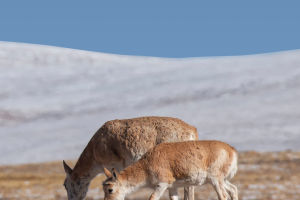There are many birds in nature, and the lifespan of birds varies from species to species. The lifespan of sparrows is usually only 2-3 years. Among the small birds, parrots have the longest lifespan, which can reach about 40 years, and most of the rest do not exceed 5 years. The possible lifespan of a typical small bird is about 5 to 10 years.
The reproductive and developmental process of birds generally includes several stages of courtship, mating, nesting, egg laying, hatching and brooding, and each stage is accompanied by complex reproductive behaviors.
1. Courtship. The reproduction of birds generally has obvious seasonality, usually in spring or summer. During these two seasons, the birds release sex hormones that prompt the birds to build their nests and alter their plumage and song to attract the opposite sex for mating.
2. Mating. There are various forms of "marriage" in birds, and most birds are "monogamous".
3. To build a nest. Most birds build nests by the females alone, and some birds cooperate with males and females to build nests, usually within a few days.
4. Spawning. After the birds have built their nests, they enter the spawning period. Birds lay eggs at 4 to 5 o'clock in the morning or 2 to 3 o'clock in the afternoon. Most raptors lay one egg in 24 hours, and large raptors lay one egg in 72 hours.
5. Incubation. Incubating eggs is the key to the reproduction and survival of birds, and the embryos in the eggs need to be formed and developed under conditions close to body temperature.
6. Brooding. After the hatching period is over, the chicks use the horny protrusions on the tip of their mouths, the egg teeth, to peck out the egg shell. After the chicks break out of their shells, they need to stay in the nest for a period of time before they can leave the nest for food.
Although birds have short lifespans, we rarely see bird carcasses. Why?
First of all, birds can generally perceive their own physical conditions. When they have a premonition that their lives are coming to an end, they usually find a relatively hidden place. At this time, they will stop going out to fly and forage, because the flying ability of these old birds has been reduced at this moment, and once they encounter natural enemies outside, it is difficult to escape from their palms. As for food and clothing, they will find some seeds or small insects nearby to satisfy their appetite a little, and then spend the rest of their lives quietly, welcoming death, where no one can see.
Secondly, if there are some stronger birds, even if they know that their bodies are getting worse day by day, they will still insist on flying and foraging. If they are tired from flying, they will temporarily stay on the ground to rest. But once they are on the ground, they are easily attacked or even eaten by other larger and ferocious animals. In the process, if the birds are unfortunately eaten, then we naturally have no way to see them.
Finally, some birds have strong "territorial awareness" like humans. Therefore, when they have a hunch that "life is about to end", they will have a "fall back to their roots" and choose to stay in their own nests. , and never go anywhere again. These birds, whose food comes from young birds, will eat the food provided by the young until they die in their nests; the carcasses they leave behind are decomposed by bacteria and eventually returned to nature


